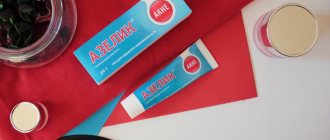Dry seborrhea is a problematic condition of the scalp in which the processes of sebum production are disrupted. The peculiarity of the dry version of seborrhea is the thicker composition of sebum, which as a result clogs the sebaceous glands and prevents its normal outflow. Most often, children and adolescents are susceptible to dry seborrhea. Adults also complain of dry seborrhea, but somewhat less frequently. The treatment regimen will differ depending on the patient’s age, the characteristics of the skin condition, the severity of seborrhea and other factors. In the treatment of a diagnosed dry form of seborrhea, various means of normalizing the condition of the skin are always used - medications, physiotherapy, and cosmetics.
How to diagnose the cause
It is impossible to understand what the reason is. Fungal infection and dryness, as a cosmetic defect, manifest themselves in the same way. You will feel itching, tightness, and flaky scales will appear on your hair.
Make an appointment with a trichologist. Using a special device, he will examine the scalp under high magnification, will be able to assess the condition, appearance, number of scales, and then draw conclusions. You may be prescribed additional tests to rule out deficiency conditions in a number of vitamins and microelements.
Vitamins for skin and hair in food
- Fatty fish
Fatty fish such as salmon, mackerel and herring are rich sources of omega-3 fatty acids, which are important for maintaining healthy skin and hair.
Omega-3 fatty acids are essential for maintaining skin thickness, elasticity and hydration. In fact, a deficiency of omega-3 fatty acids can cause dry skin.
Omega-3 fats found in fish reduce inflammation, which can cause redness and pimples. They may even make your skin less sensitive to the sun's harmful ultraviolet rays.
Oily fish is also a source of vitamin E, one of the most important antioxidants for your skin. Additionally, it is a high-quality protein that is essential for maintaining the strength and integrity of your skin.
Finally, fish contains zinc, a mineral essential for regulating
:
- inflammation;
- general skin condition;
- production of new skin cells.
- Avocado
Avocado is rich in healthy fats. These fats are beneficial for many functions of your body, including the health of your skin.
Getting enough of these fats is essential to maintaining skin elasticity and hydration.
One study of more than 700 women found that a high intake of total fat, especially the types of healthy fats found in avocados, was associated with more elastic and firm skin.
Study
: Polyhydroxylated fatty alcohols derived from avocado suppress inflammatory response and provide non-sunscreen protection against UV-induced damage in skin cells
Avocados are also a good source of vitamin E, which is an important antioxidant that helps protect skin from oxidative damage.
Interestingly, vitamin E seems to be more effective when combined with vitamin C.
https://www.ncbi.nlm.nih.gov/pmc/articles/PMC3257702/
Vitamin C deficiency is rare these days, but common symptoms include dry, rough and scaly skin that bruises easily.
A 100-gram serving, or about 1/2 an avocado, provides 14% of the DV for vitamin E and 11% of the DV for vitamin C.
- Walnuts
They are richer than other nuts in omega-3 and omega-6 fatty acids.
A diet too high in omega-6 fats can promote inflammation, including inflammatory conditions in your skin such as psoriasis.
We recommend
“Proteins in products for weight loss: features of protein diets and sample menu” Read more
Because walnuts contain a good ratio of these fatty acids, they can help combat a potential inflammatory response to too much omega-6.
One serving of walnuts contains 8% of the daily value of zinc.
Walnuts also contain small amounts of antioxidants, vitamin E and selenium, in addition to 4-5 grams of 28 grams of protein.
- Sunflower seeds
One 8-ounce serving of sunflower seeds contains 49% DV of vitamin E, 41% DV of selenium, 14% DV of zinc and 5.5 grams of protein.
- Sweet potato.
Beta carotene is a nutrient found in plants.
It acts as a provitamin A, which means it can be converted into vitamin A in your body.
Beta-carotene is found in oranges and vegetables such as carrots, spinach and sweet potatoes.
Sweet potatoes are an excellent source—one 1/2-cup (100-gram) serving of baked sweet potatoes contains enough beta-carotene to provide more than six times your daily value of vitamin A.
Carotenoids such as beta-carotene help maintain healthy skin by acting as a natural sunblock.
When consumed, this antioxidant penetrates your skin and helps protect skin cells from sun damage. This can help prevent sunburn, cell death, and dry, wrinkled skin.
Interestingly, high amounts of beta carotene can also add a warm orange color to your skin, promoting an overall healthier appearance.
- Red or yellow bell pepper
Like sweet potatoes, bell peppers are an excellent source of beta-carotene, which is converted into vitamin A in the body.
One cup (149 grams) of chopped red bell pepper contains 156% of the Daily Value for Vitamin A and 211% of the Daily Value for Vitamin C
A large observational study of women found that consuming more vitamin C in the diet reduced the risk of wrinkles and dry skin with age.
Study
: Dietary nutrient intakes and skin-aging appearance among middle-aged American women
Bell peppers are high in beta-carotene and vitamin C, which are important antioxidants for your skin. Vitamin C is also needed to create collagen, the structural protein that keeps your skin strong.
- Broccoli
Contains lutein, a carotenoid that acts like beta-carotene. Lutein helps protect skin from oxidative damage, which can lead to dry and wrinkly skin.
But broccoli florets also contain a special compound called sulforaphane. It is a powerful sunscreen. It works in two ways: neutralizes harmful free radicals and activates other defense systems in the body.
We recommend
“Vitamins for vigor: how to take them correctly and their daily dosage” Read more
In laboratory tests, sulforaphane reduced the number of skin cells killed by UV radiation by as much as 29%, and protection lasted up to 48 hours.
Evidence suggests that sulforaphane may also help maintain collagen levels in your skin.
https://pubmed.ncbi.nlm.nih.gov/24121007/
Broccoli
- a good source of vitamins, minerals and carotenoids important for skin health. It also contains sulforaphane, which may help prevent skin cancer and protect your skin from sunburn.
- Tomatoes
Tomatoes are an excellent source of vitamin C and contain all the essential carotenoids, including lycopene.
Beta-carotene, lutein, and lycopene have been shown to protect your skin from sun damage. They can also help prevent wrinkles.
Since tomatoes are rich in carotenoids, they are an excellent food for maintaining healthy skin.
Consider pairing carotenoid-rich foods such as tomatoes with a fat source such as cheese or olive oil. Fat increases the absorption of carotenoids.
https://pubmed.ncbi.nlm.nih.gov/15277161/
- Green tea
Green tea can help protect your skin from damage and aging.
The powerful compounds found in green tea are called catechins and improve your skin's health in several ways.
Like several other foods that contain antioxidants, green tea helps protect your skin from sun damage.
One 12-week study of 60 women found that drinking green tea daily could reduce redness from sun exposure by 25%.
Green tea also improved the moisture, roughness, thickness and elasticity of their skin.
Study
: Green tea polyphenols provide photoprotection, increase microcirculation, and modulate skin properties of women
While green tea is an excellent choice for healthy skin, you may want to avoid drinking tea with milk as there is evidence that milk may reduce the antioxidant benefits of green tea.
https://pubmed.ncbi.nlm.nih.gov/17213230/
How to treat
Regardless of the reason, special medicated shampoos with tar, zinc, selenium or ketoconazole are used. If the problem appears due to external or internal factors, there is a risk of a fungal infection. These components will slow down its development.
All shampoos that moisturize the scalp and are aimed at treatment contain one of the active ingredients. If a product with selenium does not work for you, you can try something else, for example, with zinc or tar. The reaction is very individual.
Hair mask with aloe juice for the night
In the modern world, not every woman can afford to devote several hours to making a hair mask. But there is one way to replace daytime care - a moisturizing scalp mask at night. But for this procedure to bring maximum benefit, you need to follow several rules:
- You need to apply the mask half an hour before bedtime.
- First, you need to comb your hair well.
- Do not apply the mask to wet hair; it should be extremely dry.
- It is important that your underwear does not get dirty while you sleep.
Night masks can consist of different components, the main thing is to exclude those products that have heating and stimulating blood circulation effects. We offer you a mask made from aloe juice, which has antibacterial and cleansing properties. He is able to revive every strand, instilling beauty and shine into it. To prepare the mask, you need to mix a third of a glass of carrot juice, the same amount of apple juice and 30 grams of aloe juice. The mask must be distributed over the entire length of the hair. Cover your head with a plastic cap and towel. In the morning, the mask can be washed off.
How else can you moisturize your scalp: 7 ways
- For care, use moisturizing shampoos for dry scalps marked Sensitive (for sensitive types) or a sulfate-free product.
- Make masks, use serums or special cream. The simplest option: mix a regular conditioner or hair mask with any cosmetic oil (burdock, coconut, jojoba). Apply to your head under a towel or film for at least 30 minutes, maximum for a couple of hours. After washing off the mask with shampoo, apply conditioner.
- Don't forget to exfoliate regularly. Many people only think about how to moisturize dry scalp when flaking. But proper cleansing is no less important to solve the problem. But under no circumstances should you apply products with coarse abrasive particles to this area. They injure the delicate scalp and can damage hairs in the initial stages of growth. Acid peels, for example, with mandelic acid, are suitable for care. Apply them with rubbing movements throughout the scalp for 15 minutes, then rinse with shampoo. Do the procedure once a week.
- Buy pharmacy leave-in products with oils. The only “but” is that if you apply it after washing, your hair may look stale. Use before shampoo. Apply, rub in, leave for several hours. Then wash it off with shampoo.
- Take vitamins if the cause is vitamin deficiency. Even if it seems to you that all the signs of a deficiency of a particular vitamin are present, first consult a doctor and get a diagnosis. Then, if necessary, the doctor will select the appropriate dose of the required vitamin or microelement.
- Balance your diet. It must contain protein: plant and animal. Include different types of meat in your menu - this way you are more likely to gain the required amount of amino acids necessary for the construction of cells. If for some reason you do not consume animal protein, take amino acid supplements designed specifically for women. The doctor will select the appropriate ones; there should be no amateur activity. If the reason is the proliferation of a fungus, reduce the consumption of simple carbohydrates and spicy foods as much as possible.
- Pay attention to your drinking regime. None of the measures will work if the body experiences a lack of fluid. Drink the prescribed amount of water in small portions throughout the day.
What does dry skin mean?
At the same time, rejection and necrosis of head cells is a normal process; the causes of pathological causes can be very different. People who suffer from dry skin also notice that their hair begins to fall out. With severe itching and loss of hair, a skin fungus is most often diagnosed. Such symptoms may indicate that the problem is advanced. To exclude such a disease, diagnostics are carried out in the laboratory. Why does skin become dry?











